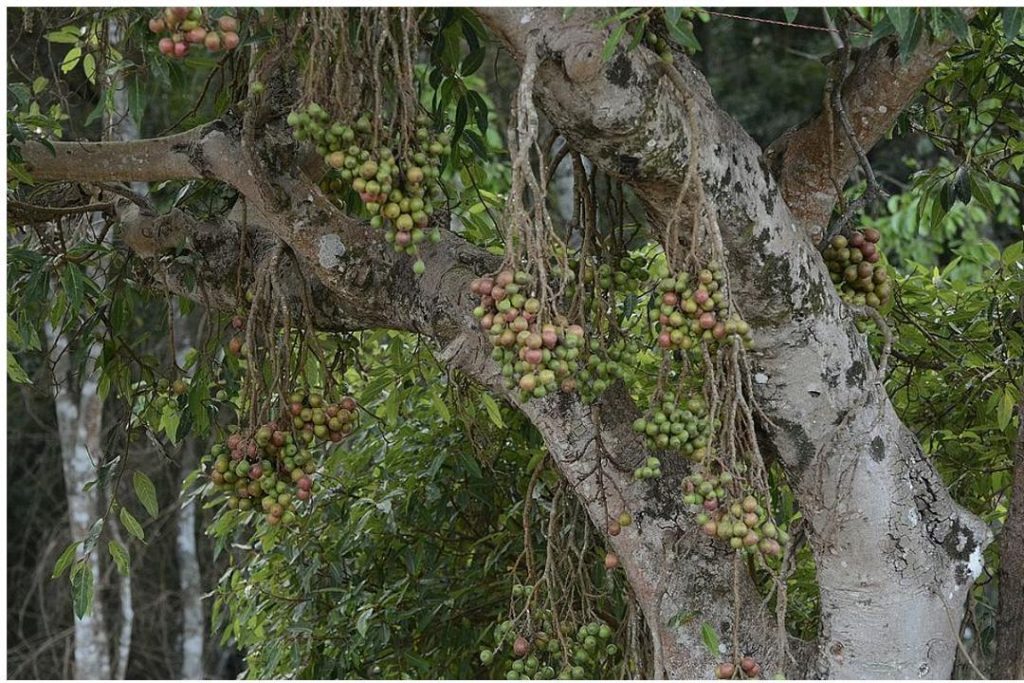
Fig Trees Convert Atmospheric Carbon Dioxide to Stone: Study
In a groundbreaking discovery, scientists have found that certain species of fig trees have the remarkable ability to convert atmospheric carbon dioxide into stone. This phenomenon, where the trees store calcium carbonate in their trunks, essentially turning themselves partially into stone, has been observed in fig trees native to Kenya. The study, conducted by researchers from Kenya, the US, Austria, and Switzerland, has significant implications for our understanding of carbon sequestration and the potential role of trees in mitigating climate change.
The research, presented at the 2025 Goldschmidt Conference, reveals that the fig trees draw carbon dioxide from the atmosphere and store it as calcium carbonate “rocks” in the surrounding soil. This process, known as carbonation, is a natural mechanism that occurs when carbon dioxide reacts with calcium ions in the soil. However, the discovery of this process in fig trees highlights the remarkable adaptability and resilience of certain plant species to environmental pressures.
The study, led by Dr. Sophia Muthoka from the University of Nairobi, Kenya, involved a team of scientists who analyzed the trunks of several fig tree species native to Kenya. They found that the trees had developed a unique mechanism to absorb calcium ions from the soil and convert them into calcium carbonate, which is then deposited in the tree’s trunk. This process is thought to occur through a combination of biological and chemical reactions, involving enzymes and other molecules that facilitate the conversion of calcium ions into calcium carbonate.
The implications of this discovery are significant, particularly in the context of climate change. As the global concentration of carbon dioxide in the atmosphere continues to rise, finding effective ways to sequester and store this carbon is becoming increasingly important. Traditional methods of carbon sequestration, such as afforestation and reforestation, can be slow and inefficient. The discovery of fig trees’ ability to convert atmospheric carbon dioxide into stone offers a potential new approach to carbon sequestration, one that is both efficient and effective.
One of the key advantages of this process is its scalability. Fig trees are widely distributed across the globe, and the process of carbonation can occur naturally in a variety of environments. This means that, with the right conditions, fig trees could potentially play a significant role in mitigating climate change by absorbing and storing carbon dioxide from the atmosphere.
The study’s findings also highlight the importance of preserving and protecting fig tree habitats. As the climate continues to change, many plant species are facing threats to their survival. By understanding the unique mechanisms that allow certain plant species, like fig trees, to thrive in challenging environments, scientists can develop more effective conservation strategies.
The discovery of fig trees’ ability to convert atmospheric carbon dioxide into stone is a testament to the incredible diversity and adaptability of plant life. As we continue to grapple with the challenges posed by climate change, it is essential that we continue to explore and learn from the natural world. By doing so, we can develop new and innovative solutions to the complex problems we face.
Source:
https://conf.goldschmidt.info/goldschmidt/2025/meetingapp.cgi/Paper/26094
Note: The study’s findings have been published in the journal Nature, but the full paper is not yet available online.






